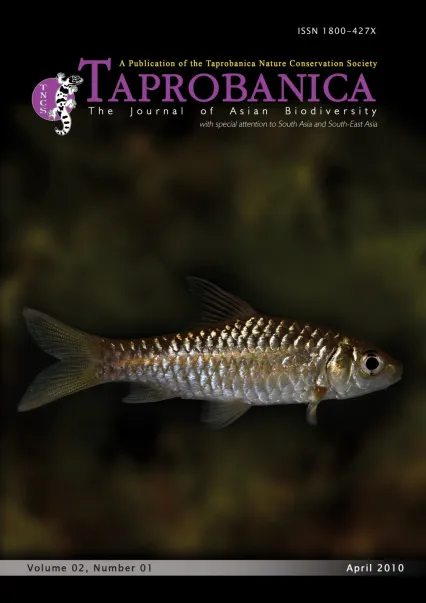

v2i1.26
Volume 2 | Number 1 | May 2010
Major Article
ISSN: 1800-427X (print)
eISSN: 1800-427X (online)
DOI:10.47605/tapro.v2i1.26
Submitted date: 29 March 2010
Accepted date: 22 December 2010
Published date: 30 December 2010
Pp. 30–47.
THE EFFECTS OF CLIMATE CHANGE ON GLOBAL WILDLIFE AND TERRESTRIAL ECOSYSTEMS
Thilina Surasinghe*
*E-mail: tsurasi@clemson.edu
Abstract
Climate change and biodiversity are interconnected, where climate change is reshaping global biodiversity. Unsustainable human activities that increase accumulation of greenhouse gases and hinder the natural balance of atmospheric greenhouse gases aggravate the effects of climate change on biodiversity. Rising seas-levels could inundate coastal habitats and stem the flow of nutrients from the ocean to the terrestrial ecosystems. Altered climate regimes directly affect wildlife, their behavior, migration, foraging, growth and reproduction. Climate change could disturb the dynamic equilibrium of terrestrial ecosystems by affecting ecosystem productivity, biomass production, hydrological balance, and trophic interactions. Further, climate change intensifies natural disasters and shifts in natural disturbance regimes. Such processes impose physiological and environmental stress on terrestrial ecosystems which adversely affect the ecosystem resistance and resilience. Moreover, warming atmosphere causes thermal optima to shift towards high latitudes and high altitudes. Terrestrial biota readily responds to temperature, where both flora and fauna alter distributions toward more favorable climatic conditions. Some climatic parameters that drive life history events, such as photoperiod, are fixed, while others, such as the timing of spring weather, are changing because of greenhouse gasses. The resulting mismatch between fixed and variable drivers of phenology, such as in mating, breeding, migration, hibernation, and post-hibernation activities, will disadvantage some species and benefit others. This will result in new ecosystems. Warming temperature favors biological activities of wildlife pathogens, since high temperature increases breeding rate, survival, hatching success and transmission of wildlife parasites and disease-causing agents. Climate change dissociates species interactions, mutual associations and a multitude of ecosystem functions. Ultimately, climate change predisposes native terrestrial wildlife to extinction and alters the functions and structure of terrestrial ecosystems. Biodiversity provides ecosystem services including the regulation and mitigation of the adverse impacts of climate change. Therefore, biodiversity conservation and terrestrial ecosystem management is critical to address climate change. Robust climate-oriented models with the use of GIS and remote sensing technology are needed to make effective predictions about the spatial and temporal effects of climate change.
Key words : Biodiversity, global warming, phenological changes, range shifting, wildlife diseases
Section Editor: Lee Harding
eISSN: 1800-427X (online)
DOI:10.47605/tapro.v2i1.26
Submitted date: 29 March 2010
Accepted date: 22 December 2010
Published date: 30 December 2010
Pp. 30–47.
THE EFFECTS OF CLIMATE CHANGE ON GLOBAL WILDLIFE AND TERRESTRIAL ECOSYSTEMS
Thilina Surasinghe*
*E-mail: tsurasi@clemson.edu
Abstract
Climate change and biodiversity are interconnected, where climate change is reshaping global biodiversity. Unsustainable human activities that increase accumulation of greenhouse gases and hinder the natural balance of atmospheric greenhouse gases aggravate the effects of climate change on biodiversity. Rising seas-levels could inundate coastal habitats and stem the flow of nutrients from the ocean to the terrestrial ecosystems. Altered climate regimes directly affect wildlife, their behavior, migration, foraging, growth and reproduction. Climate change could disturb the dynamic equilibrium of terrestrial ecosystems by affecting ecosystem productivity, biomass production, hydrological balance, and trophic interactions. Further, climate change intensifies natural disasters and shifts in natural disturbance regimes. Such processes impose physiological and environmental stress on terrestrial ecosystems which adversely affect the ecosystem resistance and resilience. Moreover, warming atmosphere causes thermal optima to shift towards high latitudes and high altitudes. Terrestrial biota readily responds to temperature, where both flora and fauna alter distributions toward more favorable climatic conditions. Some climatic parameters that drive life history events, such as photoperiod, are fixed, while others, such as the timing of spring weather, are changing because of greenhouse gasses. The resulting mismatch between fixed and variable drivers of phenology, such as in mating, breeding, migration, hibernation, and post-hibernation activities, will disadvantage some species and benefit others. This will result in new ecosystems. Warming temperature favors biological activities of wildlife pathogens, since high temperature increases breeding rate, survival, hatching success and transmission of wildlife parasites and disease-causing agents. Climate change dissociates species interactions, mutual associations and a multitude of ecosystem functions. Ultimately, climate change predisposes native terrestrial wildlife to extinction and alters the functions and structure of terrestrial ecosystems. Biodiversity provides ecosystem services including the regulation and mitigation of the adverse impacts of climate change. Therefore, biodiversity conservation and terrestrial ecosystem management is critical to address climate change. Robust climate-oriented models with the use of GIS and remote sensing technology are needed to make effective predictions about the spatial and temporal effects of climate change.
Key words : Biodiversity, global warming, phenological changes, range shifting, wildlife diseases
Section Editor: Lee Harding
- List of Articles & Contents





